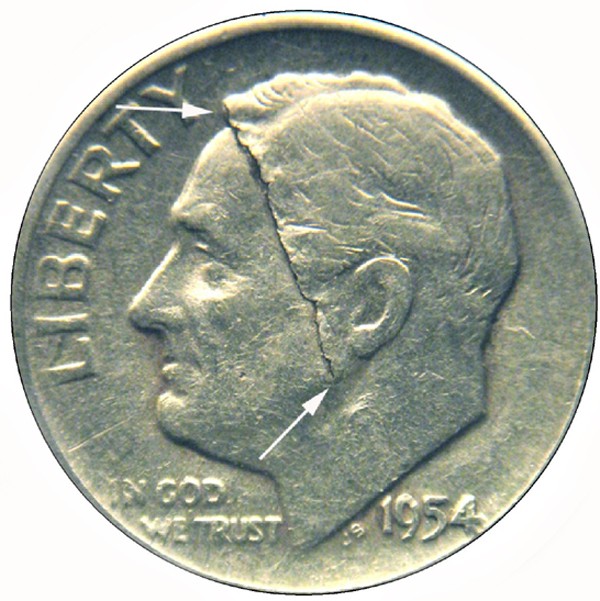PART V. Planchet Errors:
Lamination:
Lamination Cracks
Definition: Lamination errors are planchet errors in which the surface of a coin cracks and flakes. It is generally believed that lamination errors are caused by contaminants in the alloy that cause the metal to separate along the horizontal plane. Lamination errors can develop before or after the strike. They are generally restricted to solid-alloy coins. The term “lamination error” is grammatically incorrect as the metal is actually delaminating. While “delamination error” would be the proper term, we’re stuck with the terminology we’ve inherited from previous researchers.
Lamination errors are closely related to split planchets and clam-shell splits. In the latter two errors, separation also occurs in the horizontal plane, but at a deeper level.
A lamination crack is one common manifestation of a lamination error. The surface of the coin simply cracks and may lift up slightly on one side. Lamination cracks are sometimes mistaken for die cracks and split dies by novice collectors.

This 1954 Roosevelt dime shows a lamination crack crossing the President’s head.